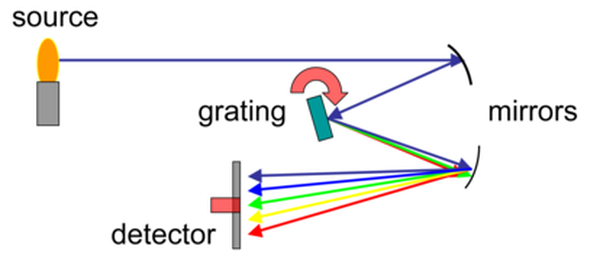
I just shipped a proof-of-concept prototype for a fibre-coupled, grating-based transcutaneous short-wave infrared (SWIR) spectrometer. This was a fun one, and demonstrated once again the vital importance of a good photon budget to a successful instrument design. The right tradeoff of complexity, resolution, and stability was not at all obvious at the beginning. The photon budget made clear that with the right grating, the right number of illumination and detection fibres, and the right detector, we'd have an economical design with lots of light for the measurement. One key result of the photon budget was that we could use an uncooled extended (2.6 μm cutoff) InGaAs detector, but that it had to be stabilized near room temperature.
Everything hinged on how stable we could make the detector temperature in a compact unit. Putting the integrating servo amp on the cold plate (with its own dissipation stabilized) gets rid of all the major sources of error: thermocouple potentials due to temperature gradients in the wiring, and DC offset drift in the amplifier. A fun project, and looks like being a great success.